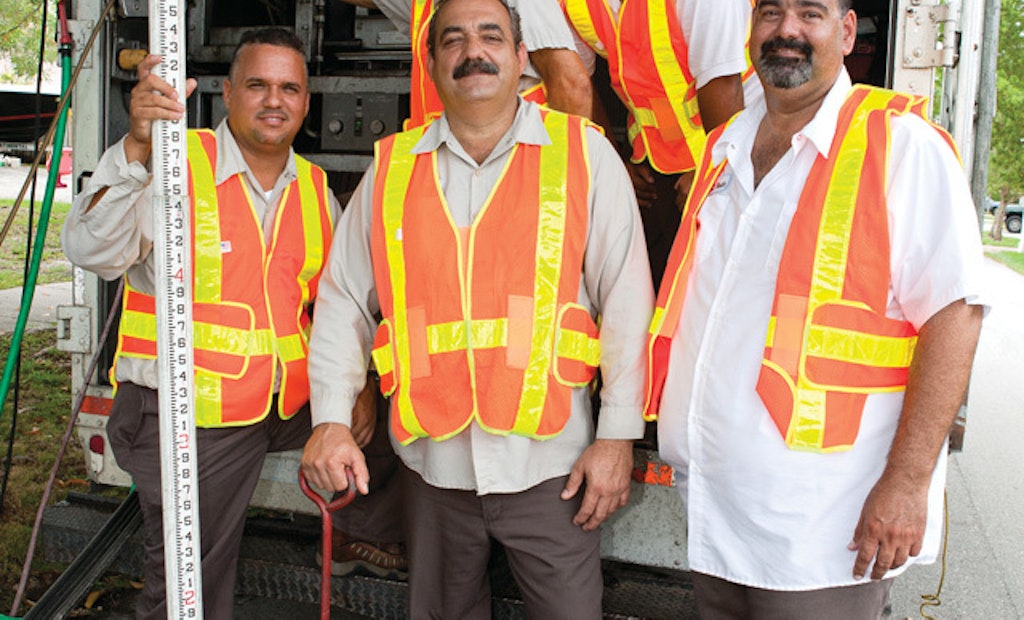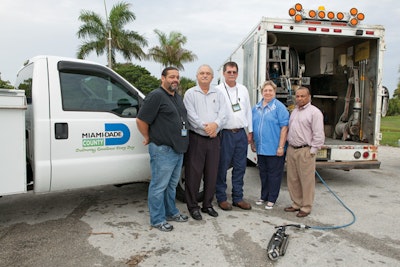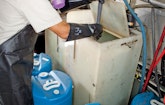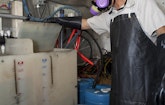
Interested in Cleaning?
Get Cleaning articles, news and videos right in your inbox! Sign up now.
Cleaning + Get AlertsIn most places, I&I is a seasonal problem or is driven by rain events. For the Miami-Dade (Fla.) Water and Sewer Department, it’s a continuous issue.
The county lies on the southeast tip of the Florida peninsula. Part of the perimeter is at sea level, the maximum elevation is 50 feet, and the average elevation is about 12 feet. So the county needs a lot of pump stations — 1,039 in all.
The water table averages four feet deep, and 80 percent of the sewer mains are under water. So are some of the laterals. That presents significant I&I challenges. Rod Lovett, chief of the Wastewater Collection and Transmission Division, sums it up concisely: “We have to deal with I&I 365 days a year. It’s a never-ending battle.”
But it’s a battle that’s being won: “We’ve reduced our average daily flow, which is currently north of 300 mgd, by at least 30 mgd through our I&I program, and that’s a trend we expect to continue.” The department had been under a consent decree to reduce I&I. The team met that decree back in 2001.
Tools of the trade
Key to the department’s success in fighting I&I is a grouting program started in the early 1990s. “We’re probably one of the major grout users in the United States, and we’ve been very successful with it,” Lovett says. “I’ve always felt that grouting is as much art as science, and some of our crew have become very good at what they do.
“When you have leaks, you get small voids outside the pipe. The grout gets pumped in, and it flows out through those leaks, fills the voids, and seals the pipe from the outside. The grout mixes with the sand around the pipe and forms a structural matrix stronger than the grout by itself. Some of these repairs are 15 years old and still holding.”
The department fields four trucks for grout work. Made by CUES, they are combination TV and grouting rigs equipped to deliver Avanti AV-118 chemical grout. A contract was awarded in February 2011 to build nine more of those rigs, and delivery was expected by the end of the year.
Grout isn’t the only weapon against I&I. In 2006-2007, the department completed one of the largest lateral lining projects in the country at a cost of $5 million, inspecting and testing 12,000 laterals, replacing 3,500, and lining 1,200, about 75 percent using the Perma-Liner system.
Miami-Dade began using CUES pan-and-tilt cameras in the mid-1990s, making lateral inspection easier and more effective, and helping to launch the county’s Suspect Lateral Program. When conducting mainline inspections, technicians stop at every lateral and pan and tilt for a look inside. If they see water flowing, they watch for at least three minutes. If the flow continues, that lateral is flagged as “suspect” and is scheduled for a follow-up inspection and rehabilitation as needed.
Laterals and manholes
Inspecting and maintaining more than 2,200 miles of 4- to 12-inch laterals would be enough of a task on its own. As it happens, those laterals are among the weak points in the system and a constant contributor to I&I.
“Wherever you have Ys and Ts connecting, you end up having more stress due to differential loading,” Lovett says. “The problem comes from sections that settle by different amounts. Where large pipes meet small pipes, that often happens. And when that pipe is clay, you often get cracks.”
That’s not good news, especially since 75 percent of the collection system is clay pipe, and 30 percent of it is more than 50 years old, some dating back to the 1940s. The department is now transitioning to C-900 PVC, which is less susceptible to cracking under stress and far easier to work with.
The department is also responsible for 74,000 manholes. Hydrogen sulfide, in concentrations up to 300 ppm in some areas of the interceptors, attacks those structures. Concrete corrosion is a continuing issue with older manholes as well.
Grouting, while used mainly for laterals and joints, has also been effective on leaky manholes. “We often have to drill through the manhole from inside, and then pump the grout to the outside to seal that leak,” says Juan Bedoya, North Unit inspection supervisor. “Only after we stop the infiltration can we apply an inner sealant.”
CPP from Epoxytec is the filler of choice, used to restore corroded manholes to their original contour. Here again, AV-118 grout is used as the sealant, and Uroflex (Epoxytec) for a corrosion-resistant coating. “We have other approved fillers and sealants, but some are proprietary and require specialized equipment,” says Lovett. “Epoxytec does not.”
Daily grind
The department fields an impressive array of equipment to meet its I&I challenges. The fleet includes 28 combination cleaning trucks, 15 from Vactor Mfg. and 13 from Vac-Con, all with high-velocity jetting units and positive displacement vacuum blowers. Also deployed are 14 inspection vans using CUES camera equipment, four trailer-mounted jetters from Harben, and a large complement of dump trucks, sidelifts, crew cabs, backhoes, excavators, and front-end loaders.
Crews tackle all the usual tasks in stride — inspection, jetting, trap cleanout, excavation, dye and smoke tests and more. Much of the routine work is done in-house, but for some processes, like Perma-Liner lateral lining, the county calls on manufacturer-certified contractors. “For dig-and-replace repairs, we handle about 65 percent of that,” says Lovett. “For the manholes, we do it all.”
Twenty-five percent of customers are commercial, and since many of those are food service, FOG presents another hurdle. “We do have an active FOG program here, and there’s a county grease trap ordinance, but I have to say I wish we had better compliance,” Lovett says. “And that ordinance doesn’t apply to private residences, which we find in some areas contribute to the FOG problem.”
Infrastructure issues
Much of the lateral infrastructure is older clay pipe, although there is some cast iron. Mains are generally concrete. Although laterals are generally above the water table, that’s not true of the mains. The soil on the seaward side is sand with a species of limestone called Miami oolite mixed in.
Administrative officer Elaine Dennard explains, “That’s short for oolitic limestone, and it’s found all around Florida. It’s a very porous rock.” The upside to Miami oolite is that, unlike sand, it doesn’t need to be shored when trenching and generally can be excavated using just a backhoe.
Any pipes under water are subject to buoyant forces that cause structural stress and complicate repair work. “Small-diameter pipes don’t have buoyancy problems, but when you get into the larger diameters, it can create problems,” says Lovett.
Further testing the infrastructure is average annual rainfall of 58 inches. Two-year storm events can dump 4.5 inches in 24 hours, and the occasional hurricane sweeps through. Hurricane Katrina sideswiped Florida on its way to New Orleans in 2005, creating what Lovett estimates was a 75- to 80-year storm event. All this means I&I will be a continuing challenge.
Proactive inspection
The department runs an extensive sensor system using hydrograph monitoring. On the mains, laterals, and at pump station basins, flow is carefully monitored after rain events. The flowmeters are ADS FlowShark units, and the data they provide is run through a SCADA system to generate the hydrographs. Changes in flow are an important clue for where to focus resources.
Comparison of rain event flow rates before and after rehabilitation is also important. Best done after a two-year event, this measurement is crucial. “We always check the hydrographs before and after a repair,” says Lovett. “That’s how you find out if you did your job.”
In addition, there’s the Well Field Protection Ordinance, which requires the department to inspect and repair all lines in well field cones of influence. Inspections are mandated on a five-year cycle. With all potable water for the area supplied by wells, it’s essential to avoid contamination of the aquifer. Wells are located on the higher west end of the county, tapping the Biscayne Aquifer at a depth of 65 feet.
Plans for the future
The recent economic downturn affected budgets in all sectors. Staffing levels have fallen 32 percent over the last 14 years. The Miami-Dade staff believes a force main inspection program is essential to proactive rehabilitation, but funding it is difficult. “Property and tax values have tumbled,” says Lovett. “We don’t operate on tax revenue, we operate on water and sewer revenues. But as a department, we’re still affected.
“If we had more mains failing, we’d probably get all the funding we need. And that’s the ironic thing about this business — if you’re doing your job right, people think there are no problems. The way I see it, we just have to do the best we can with what we’ve got. Our customers only know about us if their sewer doesn’t work, and they have little sense of what it takes to keep that from happening. It’s an unfortunate thing, but the more reliable we are, the less appreciation we get.”
Bedoya adds, “We’ve got some really good people here, some of the best in the business, and we’re lucky to have them.”
Lovett concludes, “I really believe our I&I program is second to none. We have one of the most comprehensive and in-depth programs around. You’ve got to have a well-designed program for the area and conditions you’ve been dealt. Our program wouldn’t work in, say, Atlanta. We’ve got the right program, and I believe our people do an outstanding job.” And do it 365 days a year.













